Discover 11 hidden attractions, cool sights, and unusual things to do in Windermere (United Kingdom). Don't miss out on these must-see attractions: Rydal Water, Brockhole, and Windermere Jetty. Also, be sure to include Fell Foot Park in your itinerary.
Below, you can find the list of the most amazing places you should visit in Windermere (England).
Table of Contents
Rydal Water
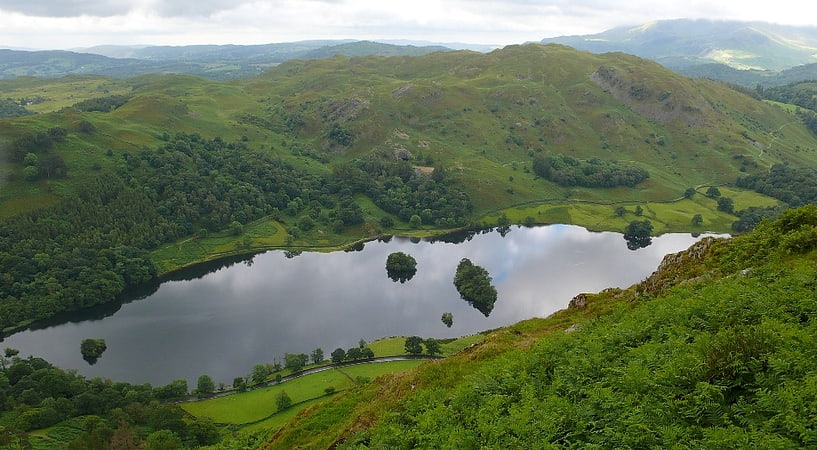
Lake in England. Rydal Water is a small body of water in the central part of the English Lake District, in the county of Cumbria. It is located near the hamlet of Rydal, between Grasmere and Ambleside in the Rothay Valley.
The lake is 1,290 yards (1.18 km) long and varies in width up to a maximum of 380 yards (350m), covering an area of 0.12 mi2 (0.31 km2). It has a maximum depth of 55 ft (17m) and an elevation above sea level of 177 ft (54m). The lake is both supplied and drained by the river Rothay, which flows from Grasmere upstream and towards Windermere downstream.
The waters of the southern half of the lake are leased by the Lowther Estate to the National Trust, whilst those of the northern half belong to the estate of Rydal Hall. Navigation is prohibited, except for residents of Rydal Hall.
Numerous walks are possible in the surrounding hills, as well as a walk around the lake itself, which takes in Dove Cottage and Rydal Mount, both homes to William Wordsworth, and Rydal Cave, a former quarry working. At the western end of the lake, steps lead to Wordsworth's Seat, which is considered to have been Wordsworth's favourite viewpoint in the Lake District.
White Moss House, at the northern end of the lake, is believed to be the only house that Wordsworth ever bought. He bought it for his son Willie, and the family lived there until the 1930s. Nab Cottage overlooks the lake and it was once home to Thomas de Quincey and Hartley Coleridge, the son of Samuel Taylor Coleridge. Close by is the historic Rydal Hall.[1]
Brockhole
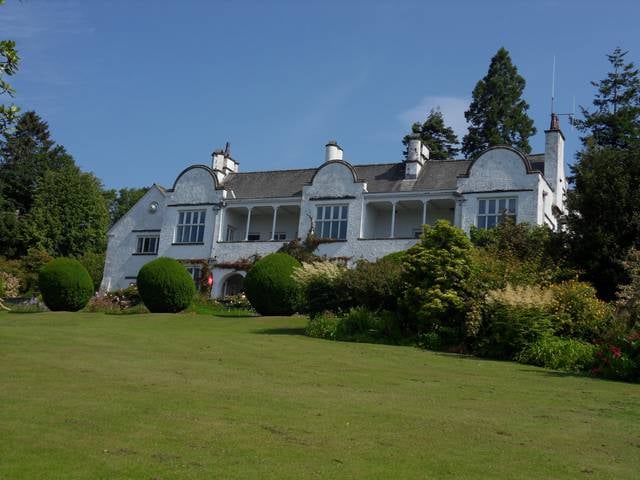
The Brockhole Lake District Visitor Centre, also known as the Brockhole National Park Visitor Centre, is a visitor centre and tourist attraction managed by the Lake District National Park Authority. It is situated on the shore of Lake Windermere, roughly equidistant between the towns of Bowness-on-Windermere and Ambleside. It includes the Brockhole house and 30 acres of grounds, including 10 acres of formal gardens and an adventure playground. The centre organises a number of activities, including orienteering, kayaking and open water swimming, as well as regular exhibitions.
Entrance to the centre and its grounds is free of charge, although a charge is made for car parking.[2]
Windermere Jetty
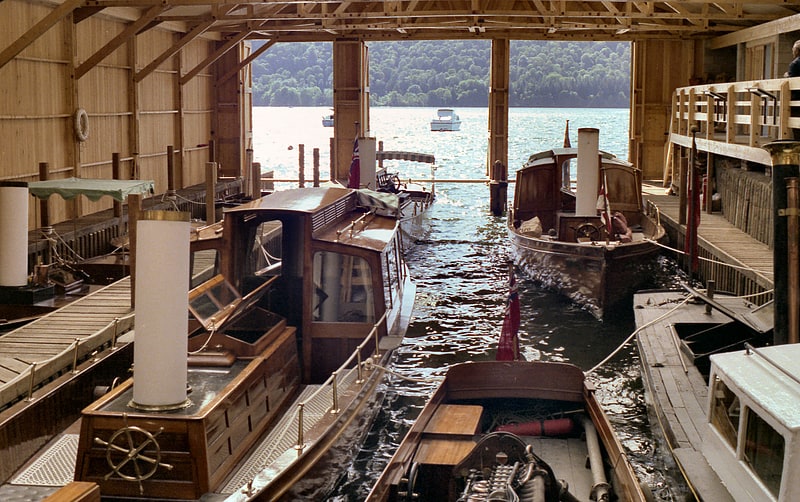
Museum in Bowness-on-Windermere, England. Windermere Jetty: Museum of Boats, Steam and Stories is a museum on the eastern shore of Windermere between Bowness-on-Windermere and the town of Windermere in Cumbria, England. It reopened in March 2019 after 12 years' closure and redevelopment work.[3]
Address: Rayrigg Road (Currently closed for renovations), Windermere LA23 1BN, Windermere
Fell Foot Park
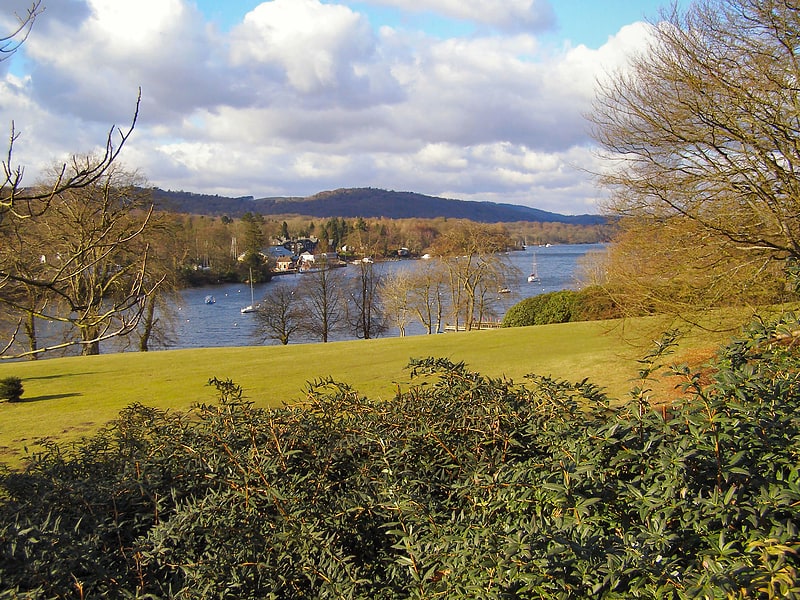
Park in Newby Bridge, England. Fell Foot Park is a country park, formerly the grounds of a Victorian house, situated beside Windermere, a lake in Cumbria, England, and in the ownership of the National Trust. It is just north of Newby Bridge on the A592 road in the civil parish of Staveley-in-Cartmel in South Lakeland district.
The estate was owned by Jeremiah Dixon, mayor of Leeds in 1784, who sold it in 1859 to Colonel G.J.M. Ridehalgh (1835-1892), a director of the North Lonsdale Iron and Steel Company, colonel of the 2nd Westmorland Volunteer Battalion Border Regiment and one of the founder members of the Royal Windermere Yacht Club. The house was demolished in 1907 to build a larger replacement, but the project was abandoned when the then owner died. The estate was given to the National Trust in 1948.
The manager's house (originally built as a gas works), several boathouses including one converted to a cafe, and a workshop and dock are Grade II listed buildings. They were constructed for Col. G.J.M. Ridehalgh. A local sailing and rowing club is located at the park and rowing boat and kayak hire is available during summer months. Other facilities include car parking, toilets, a gift shop and a playground.
Between March and September, Windermere Lake Cruises operate a passenger ferry service from Lakeside station to Fell Foot. At Lakeside, connection can be made to the same company's steamer service to Bowness-on-Windermere and the preserved Lakeside and Haverthwaite Railway.
The park's buildings were flooded during the 2015–16 Great Britain and Ireland floods.
A new watersports centre opened at the north end of the park in 2018. The park holds regular events, including a parkrun event every Saturday and the All England Open Stone Skimming Championships every August.[4]
Address: Fell Foot, Windermere
Holehird Gardens
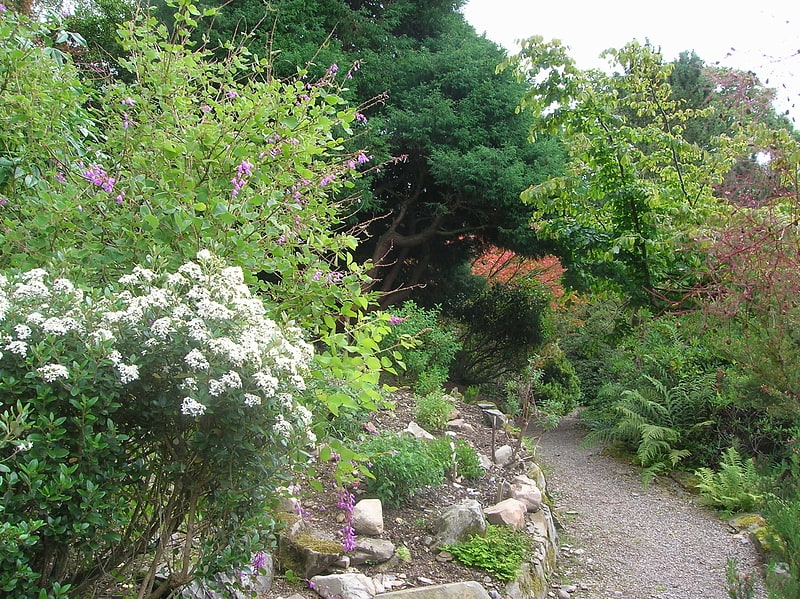
Garden in England. Holehird Gardens is an extensive 10-acre site located near Windermere, Cumbria, England. It is the home of the Lakeland Horticultural Society. The garden consists of a large variety of plants, particularly those suited to the local climate with its high rainfall. It is made up of extensive rock and heather gardens, alpine houses, and a walled garden which is of particular interest for its herbaceous borders. It was once voted by BBC gardeners to be one of the nation's favourite gardens.[5]
Address: Holehird Gardens Patterdale Road, LA23 1NP Windermere
Stott Park Bobbin Mill
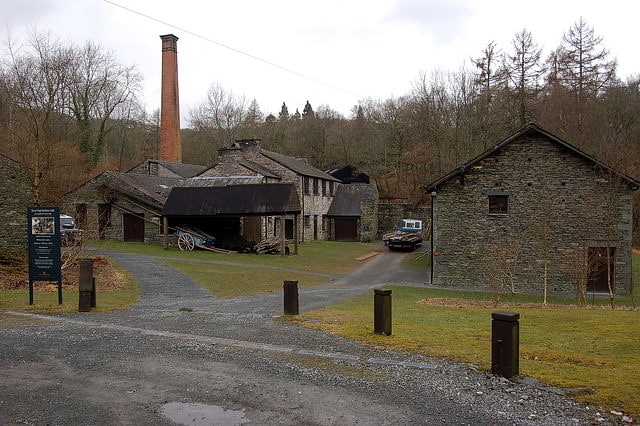
Museum in Lakeside, England. Stott Park Bobbin Mill is a 19th-century bobbin mill and now a working museum located near Newby Bridge, Cumbria, England. Built in 1835 the mill was one of over 65 such buildings in the Lake District, which provided wooden bobbins to the weaving and spinning industry primarily in Lancashire and Yorkshire. The building is today owned and run by English Heritage.[6]
Orrest Head
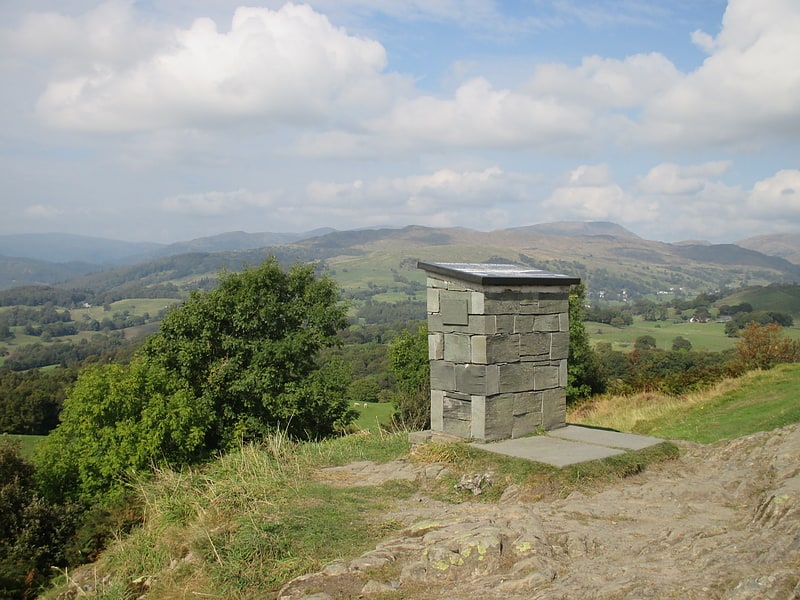
Hill in England. Orrest Head is a hill in the English Lake District on the eastern shores of Windermere. It is the subject of a chapter in Wainwright's The Outlying Fells of Lakeland, and the first fell he climbed. He describes it as "our first ascent in Lakeland, our first sight of mountains in tumultuous array across glittering waters, our awakening to beauty" and also as "a fitting finale, too, to a life made happy by fellwandering".
On the summit is a panorama naming the key visible fells which include the Old Man of Coniston, Scafell Pike, Great Gable, Fairfield and the Langdale Pikes.
Orrest Head is typically climbed directly from the town of Windermere near the station. Access is made via a reinstated Victorian carriageway which leads towards the summit. The route has been adopted by the Lake District National Park Authority as its 50th "Miles Without Stiles" route which makes it suitable for those with pushchairs and motorised off-road mobility scooters. There are several shorter but steeper shortcuts in a few places but the pathway is much easier if a bit longer.[7]
St Martin's Church
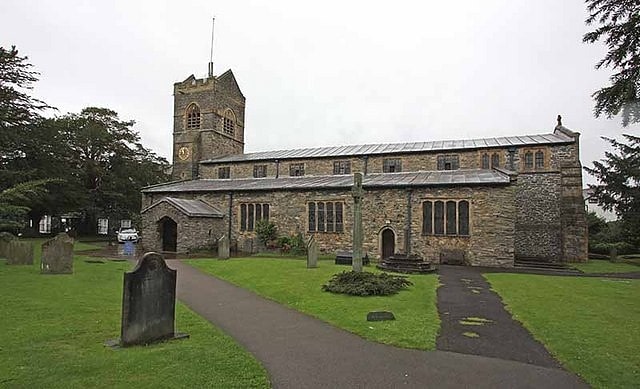
Church in Bowness-on-Windermere, England. St Martin's Church stands in the centre of the town of Bowness-on-Windermere, Cumbria, England. It is an active Anglican parish church in the deanery of Windermere, the archdeaconry of Westmorland and Furness, and the diocese of Carlisle. The church is recorded in the National Heritage List for England as a designated Grade I listed building. Its benefice is united with that of St Anne's Church, Ings; St Cuthbert's Church, Kentmere; St James' Church, Staveley; Jesus Church, Troutbeck and St Mary's Church, Windermere.[8]
Address: Lake Rd, LA23 3DE Windermere
Blackwell
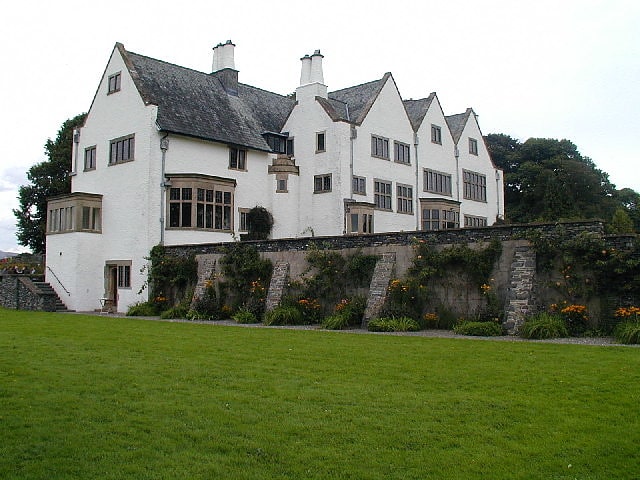
Tourist attraction in England. Blackwell is a large house in the English Lake District, designed in the Arts and Crafts style by Baillie Scott. It was built in 1898–1900, as a holiday home for Sir Edward Holt, a wealthy Manchester brewer. It is near the town of Bowness-on-Windermere with views looking over Windermere and across to the Coniston Fells.
Blackwell has survived with almost all its original decorative features intact, and is listed Grade I as an outstanding example of British domestic architecture. The house is furnished with original furniture and objects from the period. The gardens were designed by Thomas Mawson in a series of terraces. Flowers and herbs border the terraces, which form sun traps on the south side of the house.
The house has been open to visitors since 2001 and hosts regular exhibitions including work by living artists such as Edmund de Waal in 2005. It won the Small Visitor Attraction Award in the Northwest of England for 2005. The house is managed by the Lakeland Arts Trust.[9]
Address: Newby Bridge Rd., LA23 3JT Bowness-on-Windermere
St Mary's Church
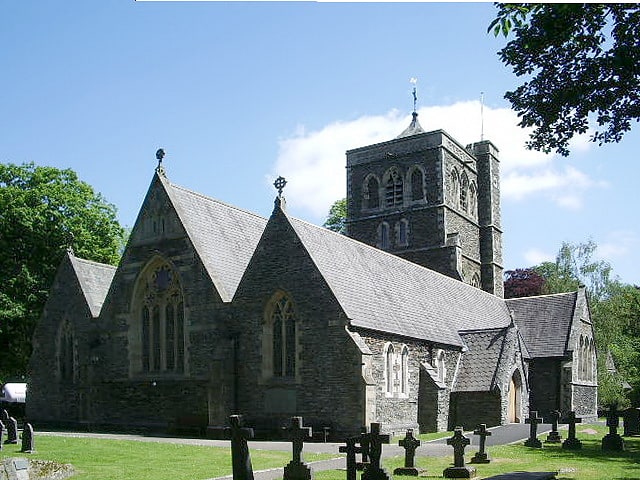
Church in Windermere, England. St Mary's Church is in the town of Windermere, Cumbria, England. It is an active Anglican parish church in the deanery of Windermere, the archdeaconry of Westmorland and Furness, and the diocese of Carlisle. Its benefice is united with that of St Martin's Church, Bowness-on-Windermere; St Anne's Church, Ings; St Cuthbert's Church, Kentmere; St James' Church, Staveley and Jesus Church, Troutbeck. The church is recorded in the National Heritage List for England as a designated Grade II listed building.[10]
Address: Ambleside Road, Windermere
Potter Fell
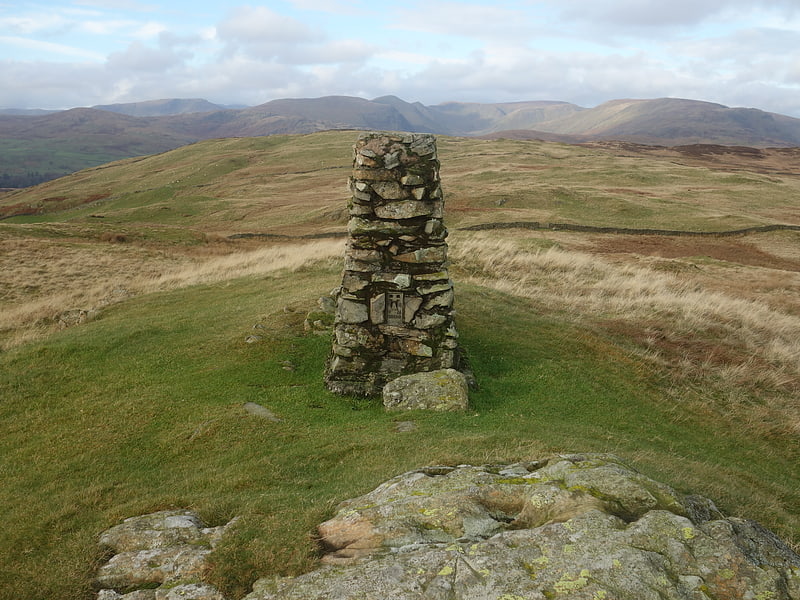
Fell in England. Potter Fell is a fell near the villages of Burneside and Staveley, Cumbria, England. A number of tarns are present on the fell, including Gurnal Dubs Tarn and Potter Tarn. Potter Fell has four major summits, two of which are mentioned in Alfred Wainwright's The Outlying Fells of Lakeland.[11]